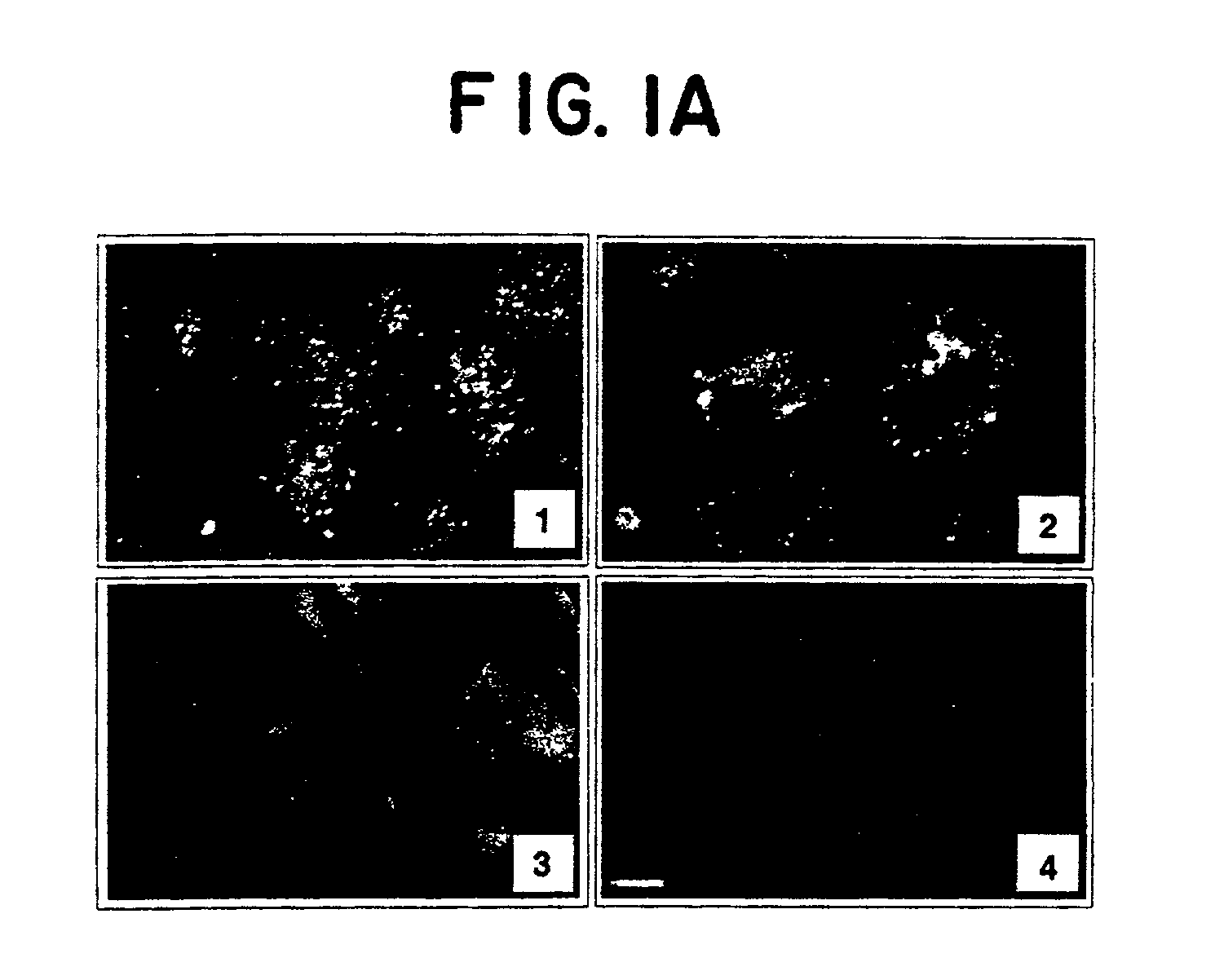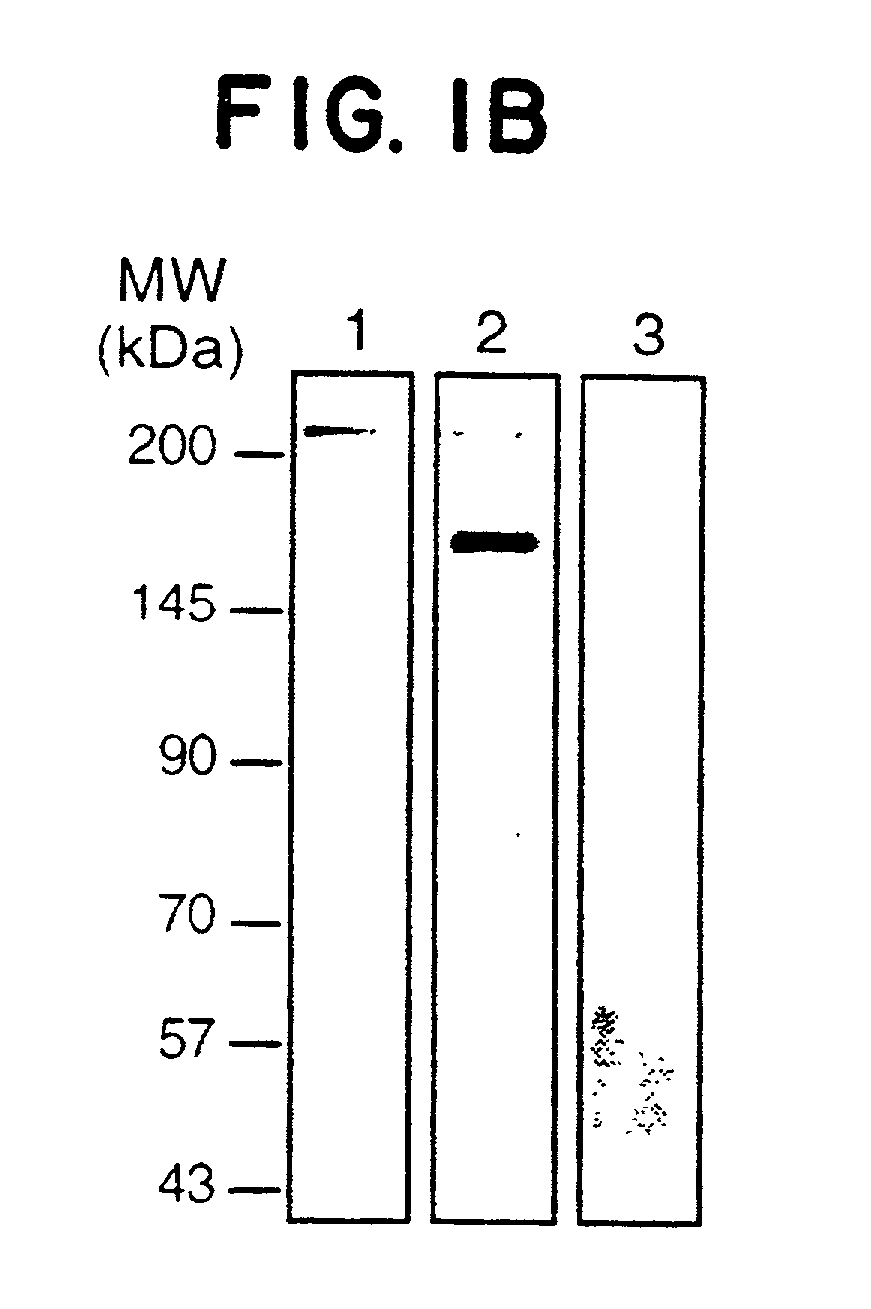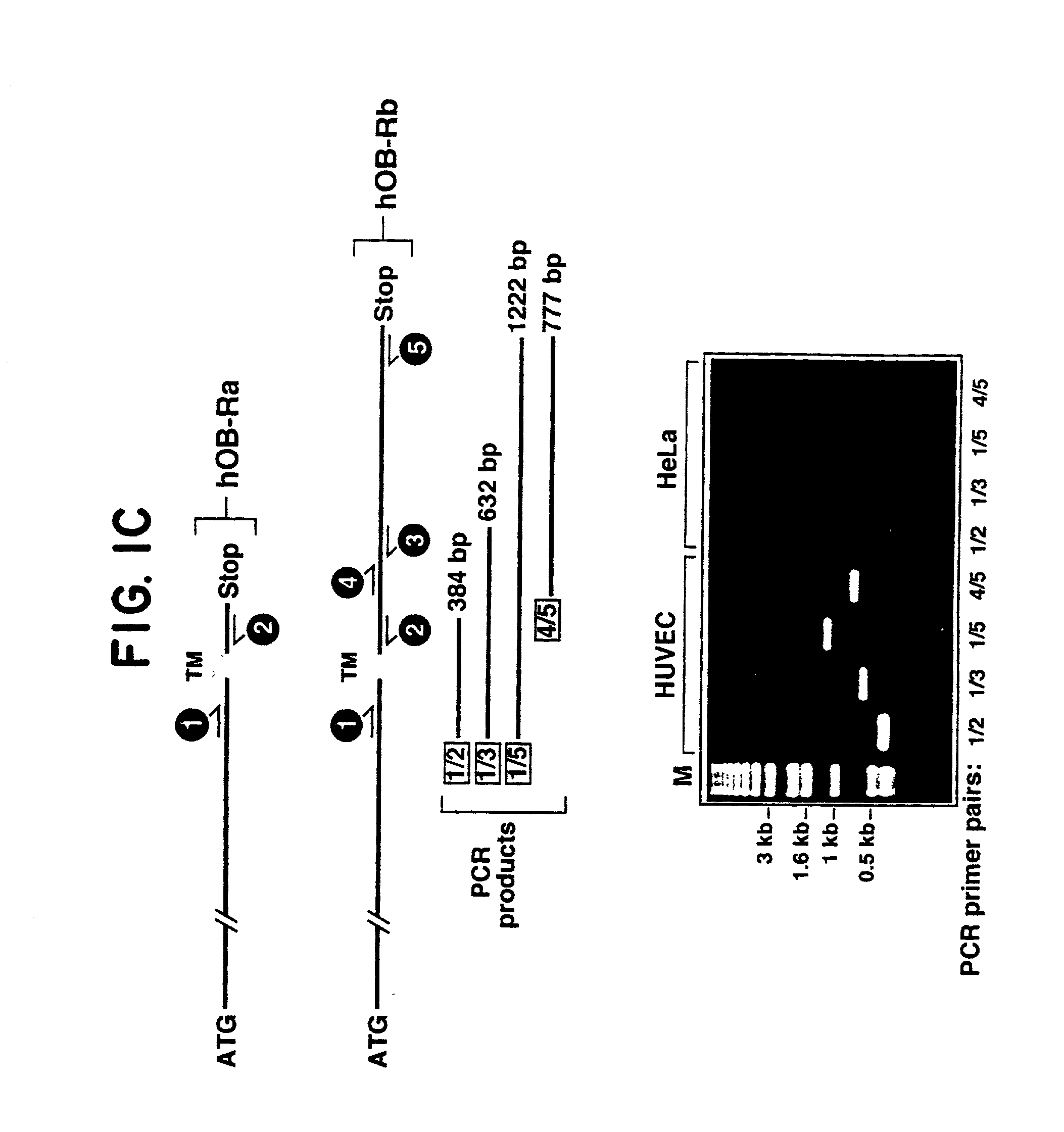Modulation of angiogenesis and wound healing
angiogenesis and wound healing technology, applied in the field of wound healing and wound healing, can solve the problems of myocardial infarction, affecting the normal continuity of structures, and deprived of oxygen and nutrients by affected tissue,
- Summary
- Abstract
- Description
- Claims
- Application Information
AI Technical Summary
Benefits of technology
Problems solved by technology
Method used
Image
Examples
example 1
Expression of Leptin in Endothelial Cells
[0115]Methods. FIG. 1A depicts confocal immunofluorescence microscopy of human umbilical vein endothelial cells (HUVEC) that were previously permeabilized (panels 1, 2 and 4), or not (panel 3), by a brief treatment with 0.1% Triton X-100. Immunostaining was performed (M. R. Sierra-Honigmann et al., (1996) Lab. Invest. 74: 684) with normal rabbit IgG (panel 4), using αOB-Rext antibodies against the extracellular region of OB-R (panels 2 and 3) and α and αOB-Rint antibodies against the intracellular region of OB-R (panel 1) described below. Scale bar is 5 μm.
[0116]Briefly, cells grown on fibronectin-coated multichamber Lab-Teck slides were fixed by adding 4% paraformaldehyde in PBS at a 1:1 dilution for 5 minutes at room temperature at the end of the treatment periods. Cells were washed four times with HBSS / 1% fetal bovine serum (FBS) and incubated with the appropriate antibody (1:1,000 dilution) for 1 hour at room temperature, followed by four...
example 2
Angiogenic Affect of Leptin In Vitro
[0125]Once it was determined that EC cells express Ob-R(L), the next step was to ascertain the role leptin played in these cells. In vitro experiments were performed examining chemotacetic directional migration across porous membranes, formation of capillary-like structures in three dimensional (3D) collagen gels and cell proliferation assays in response to leptin administration.
[0126]Methods. Bovine lung microvascular EC (BLMVEC) were plated on 6-well plates and grown in complete DMEM medium as described by G. García-Cardeña et al., (1996) Proc. Nat'l Acad. Sci. USA 93: 6448. The cells were grown to confluence and starved for 12 hours in complete medium without serum and supplemented with 2% BSA. Chemotaxis was assayed as described by V. Kundra et al., (1995) J. Cell Biol. 130: 725 using a 48-well Boyden chamber (Neuroprobe) equipped with 25×80 mm, 8 μm polyvinylpyrrolidone-free filters (Nucleopore), previously coated with 100 μg / ml collagen type...
example 3
Angiogenic Affect of Leptin In Vivo
[0129]After the in vitro effects of leptin were demonstrated as shown in FIG. 2, leptin was studied in vivo to determine whether it would enhance angiogenesis.
[0130]Methods. Slow release Hydron polymer pellets containing increasing amounts of leptin were surgically implanted in the cornea of rats, and the neovascular response observed. Angiogenic activity of leptin was determined in the rat corneal micropocket assay as described in V. P. Castle et al., (1997) Lab. Invest. 77: 51. Concentrated solutions containing the indicated amount of test samples were combined with an equal volume of sterile Hydron casting solution (Interferon Sciences), and aliquots (5 μl) were deposited onto the surface of 1-mm Teflon rods and glued to the surface of a glass Petri dish. Pellets were dried and then surgically implanted into intracorneal pockets. Neovascularization responses were assessed 7 days after implantation following perfusion of animals with colloidal ca...
PUM
| Property | Measurement | Unit |
|---|---|---|
| pH | aaaaa | aaaaa |
| pH | aaaaa | aaaaa |
| apparent molecular mass | aaaaa | aaaaa |
Abstract
Description
Claims
Application Information
 Login to View More
Login to View More - R&D
- Intellectual Property
- Life Sciences
- Materials
- Tech Scout
- Unparalleled Data Quality
- Higher Quality Content
- 60% Fewer Hallucinations
Browse by: Latest US Patents, China's latest patents, Technical Efficacy Thesaurus, Application Domain, Technology Topic, Popular Technical Reports.
© 2025 PatSnap. All rights reserved.Legal|Privacy policy|Modern Slavery Act Transparency Statement|Sitemap|About US| Contact US: help@patsnap.com



